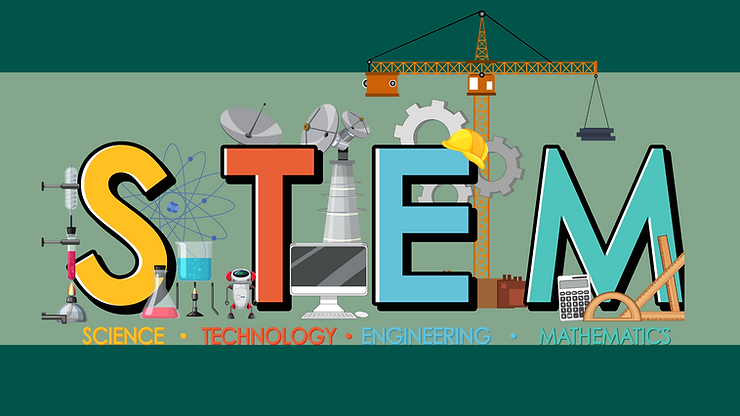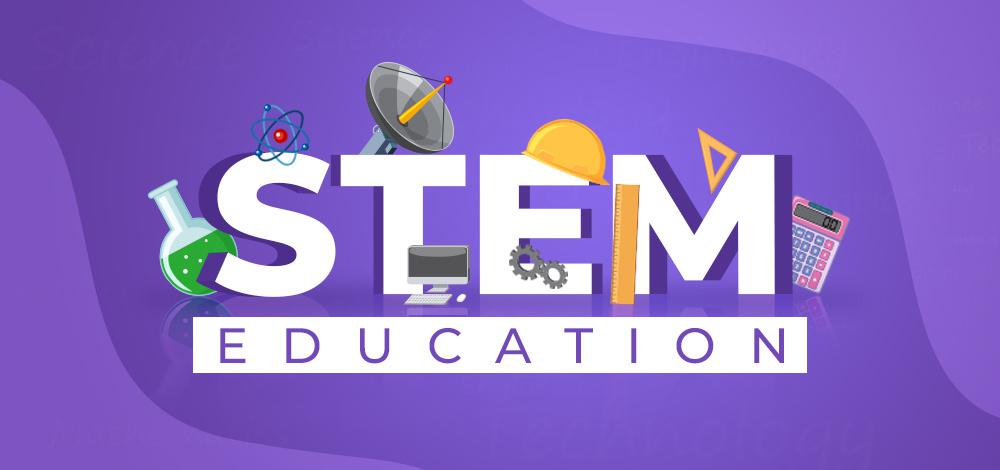Table of Contents
ToggleIn today’s fast-changing job world, STEM (science, technology, engineering, and mathematics) education is key for students wanting to get ahead. It helps them learn the skills and knowledge needed for success. By studying STEM, students get abilities that many industries value a lot. This puts them in a good spot for promising and stable careers.
STEM education teaches students how to think critically, solve problems, work together, and communicate well. These skills are vital in a changing job market. They help students tackle new challenges, innovate, and push forward various sectors like tech, engineering, healthcare, and finance.
STEM fields are full of jobs that are in high demand and pay well. These jobs include computer science, data analytics, mechanical engineering, and biomedical research. By choosing STEM education, students can stand out and find rewarding careers at the cutting edge of technology and science.
Investing in STEM education helps students and boosts a country’s economy and global competitiveness. As more STEM skills are needed, teaching the next generation these skills is key. It drives innovation, boosts productivity, and supports sustainable growth.
Key Takeaways
- STEM education provides students with critical-thinking, problem-solving, collaboration, and communication skills that are highly valued across industries.
- STEM fields offer a wide range of high-demand, well-paying career opportunities in technology, engineering, science, and mathematics.
- Pursuing STEM education can give students a competitive advantage and access to rewarding, future-proof careers.
- Investing in STEM education is crucial for driving innovation, productivity, and economic growth at the national level.
- STEM education prepares students to adapt to the constantly evolving job market and contribute to the advancement of various sectors.
Introduction to STEM Education
STEM education combines science, technology, engineering, and mathematics into one approach. It helps students use their knowledge across different subjects. This prepares them for complex challenges in the real world.
The need for STEM skills has grown a lot in recent years. This is because technology is advancing fast and innovation is key in the job market.
What is STEM Education?
STEM education means studying science, technology, engineering, and mathematics together. This way, students learn how these subjects connect and apply their knowledge to solve problems. It helps them think critically, solve problems, and work well with others.
Importance of STEM Education in Today’s World
In our fast-changing world, STEM education is very important. The need for skilled STEM professionals is growing. Students with a strong STEM background have many career options.
By focusing on the STEM curriculum, students get the skills they need for today’s STEM jobs. This helps them make important discoveries and push forward economic growth.
“STEM education is crucial for preparing students to be productive, innovative, and globally competitive citizens in the 21st century.”
Critical Thinking and Problem-Solving Skills
STEM education is key in teaching critical thinking and problem-solving skills. It makes students think creatively and use data to solve complex problems. These skills are very important in the job world. They help people adjust to new situations and help their companies grow and succeed.
Also Read: Benefits Of STEM Education For Career Development
A former student of the National Math and Science Initiative is now a computer analyst. He says his STEM education helped him do well in college and his job. STEM learning helps build these important problem-solving skills. These skills are crucial for doing well in many industries and areas.
- STEM education focuses on critical thinking and analysis
- Students learn to use their knowledge to solve tough problems
- Problem-solving skills are very important in the job world
- STEM graduates are ready for many career paths
“STEM education provided me with the discipline and skills I needed to excel in my college courses and professional career.”
STEM education helps students get better at critical thinking and problem-solving skills. This prepares them to do well in today’s work world. It also helps them make their fields grow and innovate.
Also Read: How Does EMV Technology Enhance Credit Card Security?
Collaboration, Communication, and Teamwork

In the world of STEM (Science, Technology, Engineering, and Mathematics), working together well is key. STEM education teaches not just technical skills but also important soft skills. These skills are vital for doing well in many STEM jobs.
STEM learning makes students work on group projects. They share ideas, plan together, and aim for the same goals. This helps them get ready for the work world, where solving complex problems often needs different skills. By improving their collaboration skills, students can work well with others, which boosts their teamwork skills.
Learning to communicate well is also key in STEM education. Students get better at sharing their ideas in writing and speaking. This is super useful in STEM jobs, where people often have to present their work, work with different teams, and talk to various people.
Also Read: What Are The Benefits Of Having Medical Insurance?
“STEM education is not just about imparting technical knowledge; it’s about nurturing the skills that will enable students to thrive in the dynamic, collaborative world of STEM careers.”
STEM education focuses on building skills like working together, communicating, and teamwork. This gets students ready for the modern job world, where these skills are as important as technical skills. As more people need STEM jobs, these skills will help students move forward in their careers.
Also Read: What Are The Benefits Of Using Finance Technology In Business?
Workforce Readiness and Career Opportunities
STEM education gives students skills that are very valuable today. Students with STEM degrees can find many high-demand jobs. These jobs range from computer science and engineering to data analysis and scientific research.
High-Demand STEM Careers
The STEM job market is growing fast, with fields like software development, healthcare, and renewable energy leading the way. The U.S. Bureau of Labor Statistics says STEM jobs will grow faster than non-STEM jobs. This makes STEM careers a great choice for students looking for job security and a bright future.
Also Read: Smart Strategies For Student Loan Repayment
- Software Developers: Responsible for designing, developing, and maintaining computer software and applications.
- Biomedical Engineers: Develop medical devices, prosthetics, and other healthcare technologies to improve patient outcomes.
- Statisticians: Analyze and interpret data to help organizations make informed decisions.
- Environmental Scientists: Study the impact of human activities on the environment and develop sustainable solutions.
Higher Salaries in STEM Fields
STEM fields also offer higher salaries than non-STEM jobs. The U.S. Census Bureau says STEM workers earn a median annual salary of $84,880. This is much higher than the $38,040 for non-STEM jobs. This means STEM graduates have better financial stability and chances for moving up in their careers.
| STEM Occupation | Median Annual Salary |
|---|---|
| Software Developers | $107,510 |
| Biomedical Engineers | $92,220 |
| Statisticians | $92,270 |
| Environmental Scientists | $71,360 |
STEM education gives students the skills they need for in-demand jobs. It also leads to high-paying careers. This makes STEM education key to getting ready for the challenges and chances of the 21st century.
STEM Education and Economic Growth
STEM education is key to economic growth and development. It teaches students critical thinking, problem-solving, and technical skills. These skills help create new technologies, products, and services that boost the economy.
As more jobs need STEM skills, investing in STEM education is crucial. It makes sure a nation’s workers can tackle today’s tech challenges. This leads to economic growth and competitiveness worldwide.
Countries with strong STEM education see higher economic growth and productivity. For instance, the National Science Board reported that STEM jobs in the U.S. jumped by 79% from 1990 to 2018. This was way more than the overall job growth in the U.S.
| Metric | STEM-Educated Workforce | Non-STEM Workforce |
|---|---|---|
| Employment Growth (1990-2018) | 79% | 34% |
| Median Annual Wage (2018) | $84,800 | $38,640 |
STEM graduates also earn more, which helps the economy. By building a skilled STEM workforce, countries can innovate more, work more efficiently, and stay competitive globally.
“STEM education is not just about preparing students for careers in science and technology; it’s about equipping them with the critical thinking, problem-solving, and collaborative skills necessary to thrive in the 21st-century economy.”
So, investing in STEM education is smart for a nation’s future and staying competitive on the world stage.
Addressing the STEM Gap

STEM education has many benefits, but there’s a big gap in access and representation, especially for minority groups. African-American, Hispanic, Native American, and female students often don’t get into STEM fields. This is due to limited resources, no role models, and systemic barriers.
Underrepresentation of Minority Groups in STEM
The STEM gap shows how STEM fields lack diversity and inclusion. Minority students face extra hurdles in STEM education and careers. This limits their chances to shine and contribute to tech progress. It also keeps inequality going and slows down STEM industry progress.
Improving Access to STEM Education
To fix the STEM gap and ensure STEM equity, we need better STEM education in under-resourced areas. We can do this with support, mentorship, and hands-on learning for diverse students. Giving everyone a chance to succeed in STEM careers will help create a more inclusive and innovative future.
Efforts in STEM inclusion and STEM education access can greatly help close the STEM gap. These actions help students and make the STEM workforce more diverse. This leads to economic growth and tech progress.
| Minority Group | Representation in STEM Fields |
|---|---|
| African-Americans | 7.6% |
| Hispanics | 8.0% |
| Native Americans | 0.3% |
| Women | 24% |
The data shows how minority groups are underrepresented in STEM. This proves we need specific actions to fix this and boost STEM diversity.
Hands-on, Project-Based Learning
One of the best ways to make STEM education better is through hands-on, project-based learning. This method lets students use what they learn in real situations. It makes STEM concepts more interesting and important.
A study in the Journal of STEM Education found that hands-on, project-based learning gets students more involved in STEM subjects. They understand the material better. By letting students design, build, and test solutions, STEM education encourages innovation and teamwork. This prepares them for the future job world.
Active learning methods like project-based learning push students to be more hands-on with their STEM engagement. This approach improves their grasp of the subject. It also boosts their critical thinking, problem-solving, and teamwork skills. These skills are very important in today’s job market.
| Benefits of Hands-on, Project-Based STEM Education | Traditional Lecture-Based STEM Education |
|---|---|
|
|
By using hands-on, project-based learning, STEM education can be more engaging and effective. It prepares students for the challenges and chances of the 21st-century job world.
STEM Education and Innovation
STEM education is more than just teaching technical skills. It helps students think innovatively across many industries and careers. By focusing on critical thinking and problem-solving, STEM education makes students creative and ready to solve complex problems.
This mindset is key for economic growth. It leads to new technologies and services that change industries and help people worldwide. So, investing in STEM education and innovation is vital for the next generation of innovators.
Unlocking Creativity through STEM
STEM education gives students specialized skills and boosts their STEM skills and innovation abilities. Through projects and teamwork, STEM classes inspire students to be creative and solve real-world problems.
- Fostering critical thinking and analytical problem-solving
- Encouraging collaboration and teamwork
- Promoting hands-on, experiential learning
- Cultivating an entrepreneurial mindset
Driving Economic Growth through STEM Education and Creativity
STEM education empowers students with STEM curriculum and innovation skills. This is crucial for economic growth and staying competitive. As new tech and industries come up, there’s a big demand for STEM skills. This opens many doors for those skilled in these areas.
| STEM Field | Projected Job Growth (2020-2030) | Median Annual Salary |
|---|---|---|
| Software Development | 22% | $110,140 |
| Biomedical Engineering | 6% | $92,620 |
| Data Science | 31% | $98,260 |
By investing in STEM education and innovation, we can tap into our citizens’ creative potential. This leads to economic growth and keeps us at the forefront of technology.
“STEM education is not just about imparting technical knowledge; it’s about cultivating an innovative mindset that can transform industries and improve lives.”
STEM Education for All Interests

STEM education is not just for science and tech. It teaches skills that help in many areas, like arts, sports, and business. These skills include critical thinking, creativity, and solving problems. They are useful for anyone, no matter their interests.
By learning STEM in different ways, students see how it helps in many fields. This makes them ready for a changing job market. It’s key to use STEM education in many areas to grow and find new paths.
Today, we need people who can think deeply, innovate, and work together across fields. STEM education prepares students for this. It helps them follow their interests and find rewarding jobs.
“STEM education is not just about training the next generation of scientists and engineers; it’s about equipping all students with the skills and mindset to thrive in a constantly changing world.”
Teachers and leaders are realizing that STEM skills are useful everywhere, not just in science. This means STEM education should be open to everyone. It makes a workforce that is diverse, creative, and ready for the future.
Also Read : How Online Education Is Changing The Landscape Of Higher Learning?
Conclusion
STEM education is key for getting students ready for the 21st-century job market. It teaches critical thinking, problem-solving, teamwork, and communication. These skills help students succeed in many careers, not just in traditional STEM fields.
STEM education also encourages innovation, which can boost the economy and solve global problems. With more jobs needing STEM skills, it’s vital to invest in STEM education. This ensures success for individuals, communities, and the country.
STEM education does more than prepare students for jobs. It helps them think critically and creatively. By focusing on STEM, we prepare the next generation to lead in innovation and solving problems. This will make our society and the world better.
FAQs
Q: What are the benefits of STEM education for career development?
A: STEM education provides students with essential knowledge and skills that are highly valued in today’s workforce. It prepares them for careers in engineering, mathematics, and other STEM disciplines, offering a pathway to high-quality job opportunities.
Q: How does STEM literacy contribute to an individual’s career prospects?
A: STEM literacy equips individuals with the problem-solving abilities and critical thinking skills necessary for success in various fields. Employers often seek candidates with a strong foundation in STEM literacy, as it indicates the ability to tackle complex challenges.
Q: What role does the Department of Education play in promoting STEM education?
A: The Department of Education supports STEM education initiatives by providing resources, funding, and guidelines for K-12 and higher education programs. This helps ensure that students receive high-quality STEM instruction and access to learning opportunities.
Q: What is the significance of interdisciplinary approaches in STEM education?
A: Interdisciplinary approaches in STEM education encourage collaboration across different fields, enhancing teaching and learning. This method allows students to apply knowledge from various disciplines, fostering innovation and creativity in problem-solving.
Q: How do research centers contribute to the advancement of STEM education?
A: Research centers play a vital role in advancing STEM education by conducting studies, developing new teaching methods, and evaluating the effectiveness of STEM programs. Their findings help inform best practices and improve educational outcomes for students.
Q: Why is high-quality STEM education important for K-12 students?
A: High-quality STEM education in K-12 lays the groundwork for future learning and career opportunities. It helps students develop a strong interest in STEM fields, encourages critical thinking, and prepares them for rigorous postsecondary education.
Q: What are some effective strategies for improving STEM instruction?
A: Effective strategies for improving STEM instruction include incorporating problem-based learning, utilizing technology, and fostering partnerships with local industries. These approaches enhance student engagement and provide real-world context to STEM education.
Q: How does STEM education support workforce development?
A: STEM education supports workforce development by aligning educational programs with the needs of employers. By providing students with relevant knowledge and skills, it ensures a well-prepared workforce capable of meeting the demands of the evolving job market.
Q: What initiatives are in place to promote STEM education for all students?
A: Various initiatives, such as the National Science Foundation’s programs, aim to promote STEM education for all students. These initiatives focus on increasing access, enhancing equity, and ensuring that diverse populations can benefit from high-quality STEM learning opportunities.
Q: How can educators enhance STEM teaching and learning in their classrooms?
A: Educators can enhance STEM teaching and learning by incorporating hands-on activities, fostering a growth mindset, and utilizing real-world applications. Continuous professional development and collaboration with peers can also improve instructional practices in STEM education.





